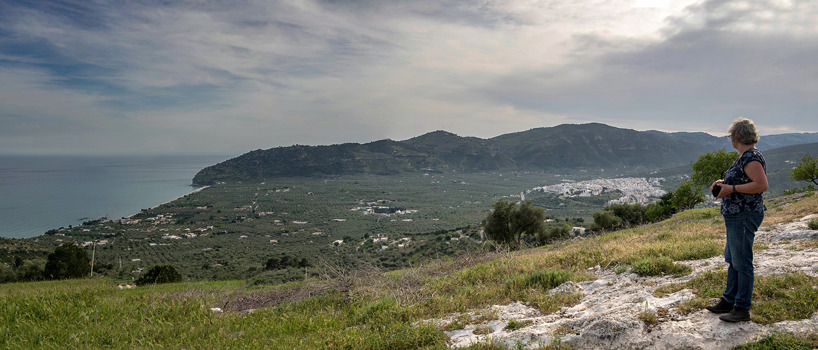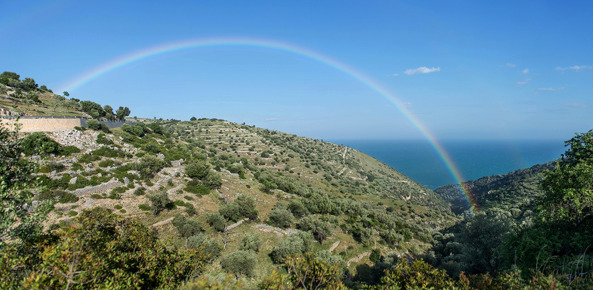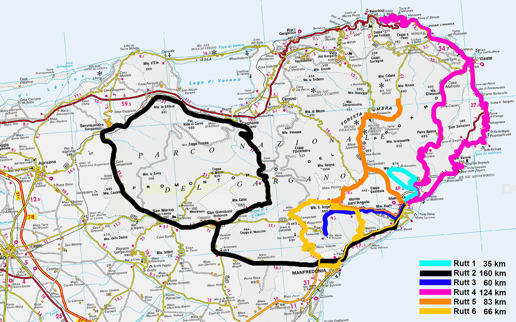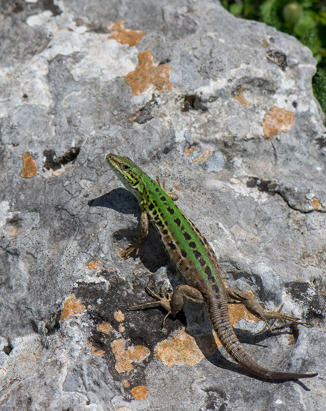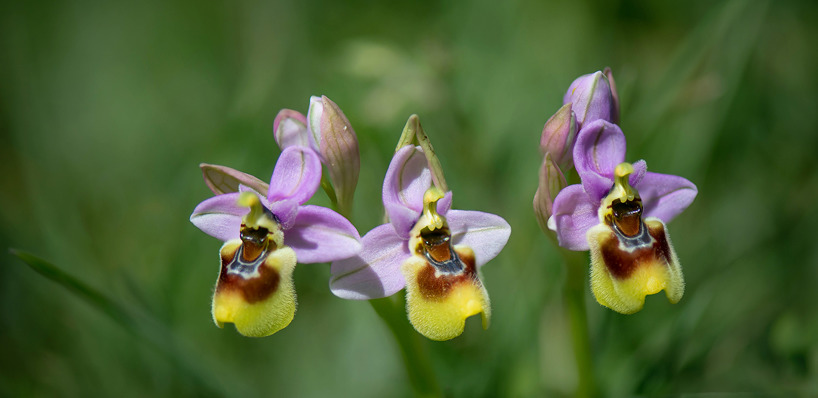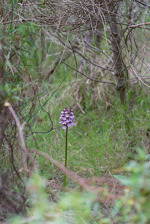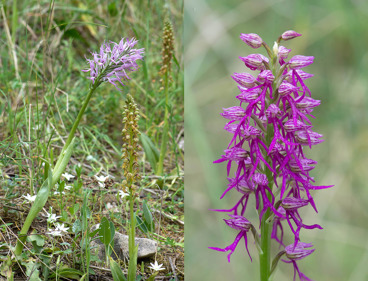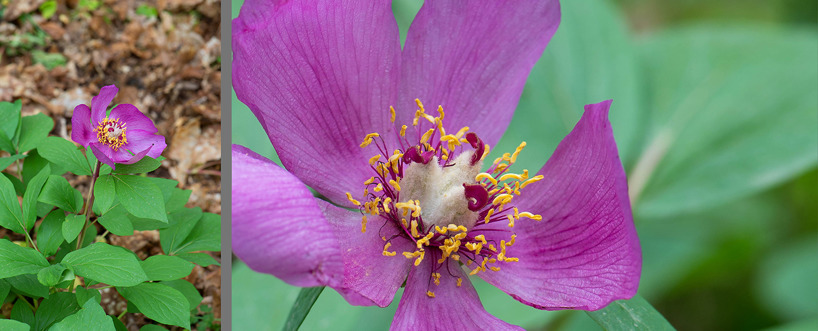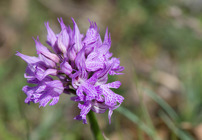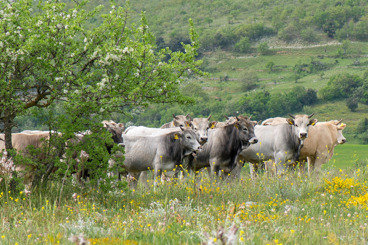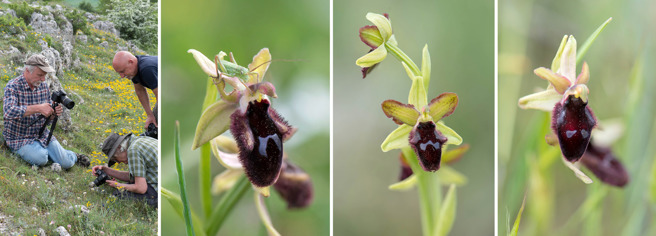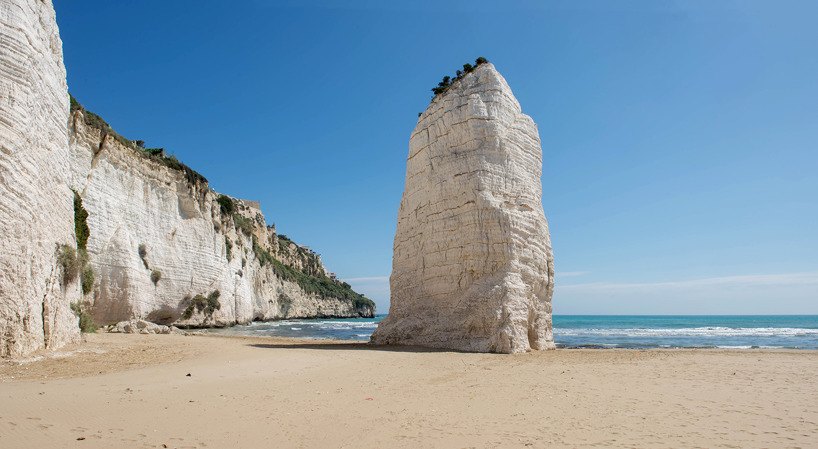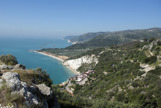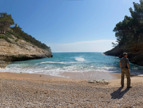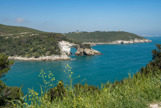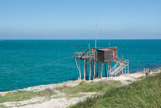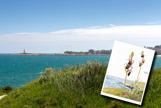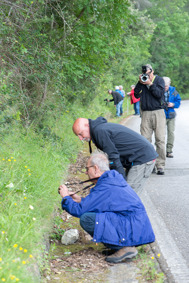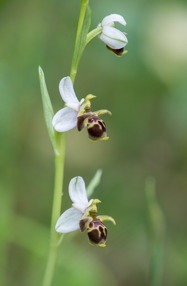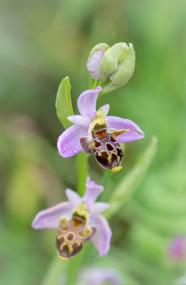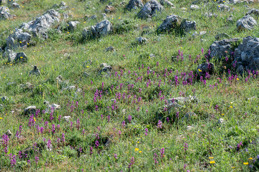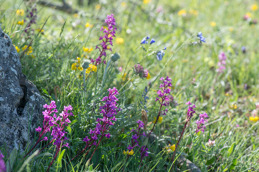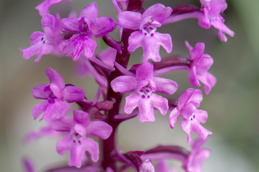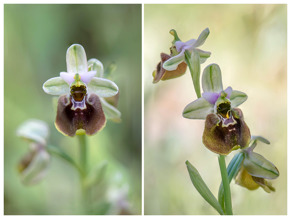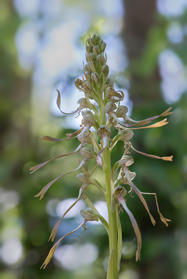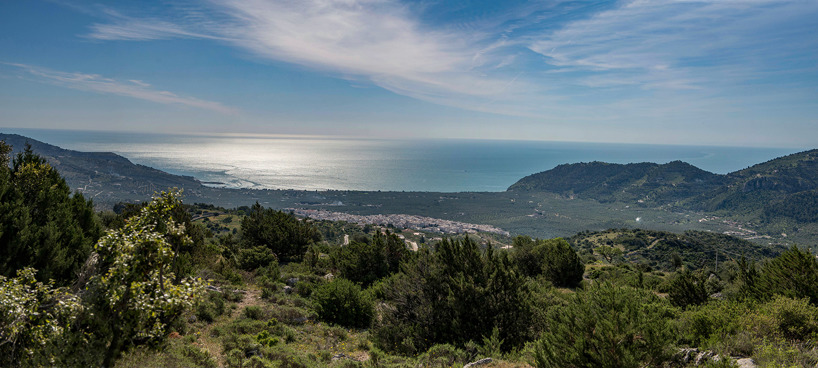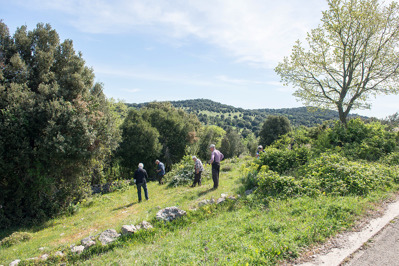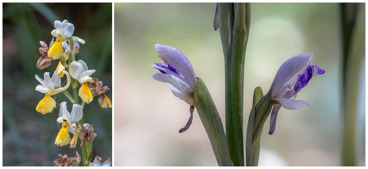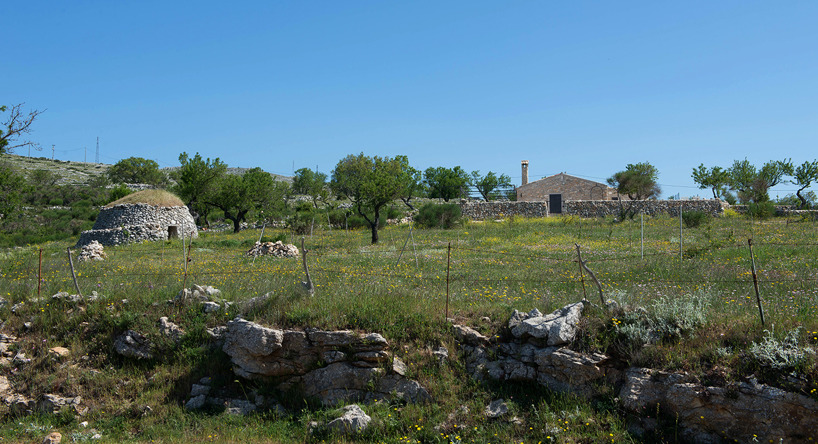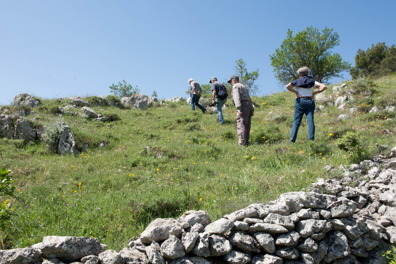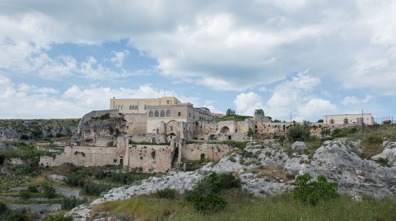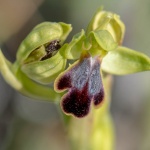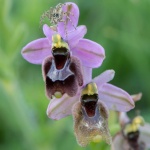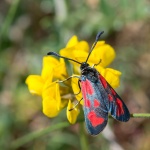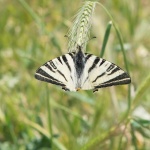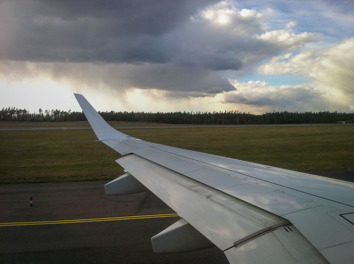
Orchid Paradise Monte Gargano 16-23 April 2016
(You get a bigger picture when chlicking the pictures)
For the orchid journey 2016 we had chosen to do a revisit at Monte Gargano. Now it was 11 year since our last visit (2005) and in the current group there was several that haven’t been there.
For most of the members the journey started from Landvetter Airport, Gothenburgh, but there was some that had chosen to start their flight from Kastrup, Kopenhagen. Anyhow, from our stopover at Munich the group gathered again for the onward flight to Bari. Here we got our pre-booked cars and the 120 km drive to Mattinata, Gargano, could start
We chose to drive the slightly smaller road along the coast and therefore came running along the salinas just before you reach the peninsula. Although the bird life was not so extensive at that time we could among other study flamingos, stilt and slender-billed gull.
Like last time, we had chosen Villaggio San Matteo, Mattinata, as our base during the week. This is an apartment hotel just above the beach, a couple kilometer from the town, within large groves of olives and citrus fruits. It consists of single storey houses with a number of apartments in each. For the time being, there is no restaurant here but an expansion is underway and within this it is even planned for a restaurant.
The small town Mattinata is situated on the lower slopes of Monte Sacro, the 874 m high mountain that towers behind the town. Our apartments are located just inside the beach to the left.
Warm, dry spring
The spring 2016 had been hot and dry. Especially April had been much warmer than normal. This continued throughout our week with daytime temperatures of 18-24 degrees, as nice summer at home. Only one showers we had, an afternoon at our way back home to the apartments.
On the way back home, after the only showers we got during the week, we saw this rainbow. Of course it was slam the brakes to capture this phenomenon. The rainbow is thought to be a sign that no more disasters will befall us. This was especially true for our week that otherwise offered a wishful weather
The heat, however, had caused an early flowering and maybe even a short one. At lower levels, therefore there were a lot of orchids that already had withered. But because there are plenty of sites even in the higher-lying terrain we could find most of the species in good condition..
Total during the week we found 47 species. Three of these were seen only as faded examples, Anacamptis collina, Himantoglossum robertianum and Neotinea lactea. At some sites we also saw Ophrys with large seed pods. It was, however, not possible to determine the species, but most probably it was early flowering O. fusca species. Another species that we didn’t see with flowers was Anacamptis fragrans, which we only found with buds. In addition to the species, we also found a number of hybrids.
This well faded Himmantoglossum robertianum, already with large
seed pods, may represent the effect of the early, hot spring
Bonus-stop
Since we had arrived to Bari before lunch, we took our time to make a bonus stop on the road to Mattinata. Here, in a slope, just before Manfredonia, we could already imagine that spring was early. Many of the species we saw was about to wither. However, there was much Serapias in full bloom. We could here, before our actual excursion days had begun, studying five of Gargano's seven species of Serapias. The above image shows from left: Serapias parviflora, S. bergonii, S. orientalis subsp. apulica, S. cordigera and rightmost S. vomeracea.
Excursions
The six field trips, planned during the winter should now be tested in reality, one per day. It turned out that they worked great. But even that we had to leave some of the plotted sites without visits, there were still six intensive days. It also turned out that some of the sites, that previously was noted as fine orchid areas, now was heavily grazed or overgrown. Changes in how the land is used, with a strong impact on the orchid flora, are not uncommon and may be taken into account in the orchid-search.
Although that the peninsula is not large, about 40 x 60 km, there will quickly be kilometers driven, following the winding roads. All roads at Gargano are paved and usually of good quality, although they in some cases are narrow and sometimes so narrow that passing oncoming cars can't easily be done. The map above shows roughly our six pre-planned excursions.
Day 1
For this first day, we chose the shortest route, Route 1. It took us up through Monte Sacros slopes, behind Mattinata. This is one of the most orchid-rich areas at Gargano and our expectations therefore were high. But already at the first stop, we became aware that the fields are not the same from year to year. From the above picture you can see how well grazed the slope is and it is therefore only at the edges of shrubs where higher plants can survive.
Fortunately, we found areas further on that had not gotten the same unfavorable treatment from sheep and goats.
To the right, four of the species we found in our continuing trip towards Monte Sacro.
From left a spider-Ophrys, Ophrys passi-onis. Furthermore, the last one of the six species of Serapias seen during our week, Serapias lingua. The third one is Ophrys phrygana, and to the far right a variant of Ophrys bertoloniiformis with unusually red petals and sepaler which usually are quite green.
It is not just orchids you'll see. Here is an Italian wall lizard, Podarcis sicula, who willingly is posing for me. Of animals it is mainly lizards you can see, on rare occasions perhaps a snake that winds off quickly. For larger animals like squirrels, martens, hares, deer and the rare forest cat, it is mainly in the larger forest areas you can find them. But for visitors, which is moving along the roads, it is very rare to see any of these.
Of all Gargano's 34 Ophrys species it is perhaps the above Ophrys neglecta, that is the most beautiful one. This species is fairly common and widespread over most of the peninsula. It is perhaps best known as Ophrys tenthredinifera, a species that some years ago was splitted into several different species with new names (sometimes old ones).
Day 2
For our second field trip we chose Route 6, but a miss in the GPS handling meant that we went up the eastern road to Monte San Angelo and not like marked on the map. We therefore changed and went up the south road later in the week when we chose Route 3. The plan was that, through Monte San Angelo, drive down into the valley, Val Carbonara, below, and than follow this before we returned down to the lowlands, and back to our apartments. The road up to Monte San Angelo at just over 800 m goes as serpentine roads through an amazingly landscape reshaped by man. The picture above can give an indication of this huge wall construction that forms the mountain sides to possible cultivation plots.
Our first stop was made after coming about halfway up. Here was formerly an orchid rich slope which now totally was overgrown by pine forests with dense undergrowth. Up at the top of the slope there was previously a nice site with many Orchis purpurea. We managed to find a trodden path that led upward and came to the site which now was almost completely overgrown. However, there were still some orchids there who fought the bushes.
After passing Monte San Angelo (which is well worth a separate visit) we drove down to the bottom of the valley below, a fall of about 300 m. Val Carbonara is a beautiful valley between Monte San Angelo and the 1000-meter peak Monte Spigno and Monte Croce on the other side. The valley rises slowly up to the 700m level again from where the above image was taken.
Above shows a selection of some of the orchids we so on our way up the valley. From left: Ophrys brutia, one of all those small spider-Ophrys. Next is Orchis provincialis. Then comes a Neotinea ustulata which is one of the few orchids on the Gargano that we know from home. Finally, a color variant of Anacamptis papilionacea. Typically the lip is reddish at this subspecies that sometimes is referred to as subsp. rosea.
Further up the valley, we botanised in some flower-rich meadows. Here we found two of the few orchids that we even have at home, Burnt Orchid and Green-winged Ochid, Anacamptis morio. The last one was probably the most common orchid seen at Gargano during our visit. It was seen at most of our visited sites. Here, we also met for the first time Neotinea tridentata (see picture to the right).
One of the main goals for today's excursion, was to find Ophrys promontorii. This used to be out on a rocky meadow behind a greatly barbed wire fence. We were a little hesitant when we discovered that there were some 15 young cattle, mostly bulls, inside the fence. But it turned out that they mostly were curious about what kind of guests they got and after a while they disappeared to another part of this area. Luckily they had probably recently been released into the actual area for the meadow looked quite undisturbed with lot of flowers, including a number of the sought O. promontorii.
Now it was time for our third excursion we chose one of the longer journeys, more than 120 km would it be before we were home again.
The main goal for the day was to find Ophrys oestrifera subsp monti-gargani or previously called Ophrys cornuta.The journey therefore went eastward to Vieste and further towards Peschici, where the last part of the route is known to have the sought Ophrys. But before we got that far, we made a few stops to enjoy what is called "one of Italy's most beautiful roads," the road from Mattinata to Vieste. Here dips the white limestone cliffs steeply into the sea and the coastline is mostly impossible to reach from the land side. The picture above shows the cape stretching into the south east and the town of Vieste above the steep rock wall. The erosion has left this 27 meter tall monolith on the sandy beach. Below are some more pictures from the route concerned.
Ophrys apulica is the Ophrys that has the biggest flower of all European Ophrys. Here on the cape, jutting out after passing Vieste, is a place where you allways can find this magnificent orchid. To get the image however can be stressful at times. It is often windy here and Vieste is considered as one of Europe windiest places.
Day 4
Now we took the second one of the longer tours, in fact the longest of which chould be about 160 kilometers. The route goes around the peninsula's highest peak, Monte Calvo 1065 m. We drove to San Giovanni Rotondo and further via San Marco in Lamis toward Sannicandro Garganico. On this part of the route, we passed the route's highest point, just over 700 m. The steep slopes after San Marco in Lamis, just before we came up on the new level, was worth the trouble of getting up there. Here most orchids where fresher than lower down. The image above shows a slope with lots of Orchis anthropophora and Orchis italica.
Also on this day we had a special orchid we wanted to find, Ophrys parvimacu-lata. It is mainly in Apulia this can be found and most common on the north side of Gargano. Unfortunately, the sites where I've seen it was either grazed or over-grown with bushes. But with the help of a only one year old note we managed to find it. So even if the number of this species wasn't that great, could we at least note it as found.
Our continuing journey went along Lago di Varano, a lagoon lakes inside the Gargano's north coast, to the village of Cagnano Varano where we once again drove over the mountains back to San Giovanni Rotondo. But now on the other side of the Monte Calvo. Here on our way back we found this week's perhaps greatest surprise, a flowering Himantoglossum hircinum! This species blooms usually not until a bit into May.
A few other species also seen on the way home was Dactylorhiza romana, a species that is close to our Elder-flowered Marsh Orchid, and likewise has two color variants. We managed to only find the yellow one. Although the picture to the right shows a pretty white variant. The other one is a Ophrys biscutella, a species that has its main distribution at Gargano where it is quite common.
Day 5
A visit to the large forest area, Foresta Umbra, belongs to a must visit if you are at Gargano and the second last day we would make such a visit. For the way up there, we chose to drive from Mattinata via "Strada Communale Paratina", a very narrow and at the first kilometers a very steep road. Opportunities were given, however, to stunning views of Mattinata and the coast beyond.
One reason for the rather short the visit at Foresta Umbra was that we would search the slopes down towards Val Carbonara valley below Monte San Angelo. It came, however, to prove that the orchid flowering, in these mostly south-facing slopes, had probably seen its best. Eg we had hoped for Orchis pauciflora, it use to be plenty of this here. We finally managed to find a single one in a shady place. However here we got our second surprise, a flowering Limodorum abortivum. This one is rarely seen in flower until mid May.
Day 6
Now we had reached the last day of our journey and therefore there was only one of the preplanned excursions remaining, Route 3. This went to Monte San Angelo and from there south to the edge of the mountain. This time, however, we chose to go up the southern road to M. S. Angelo, as we should have done day two. This is a breathtaking experience where we raise about 700 m over a distance of about 2.8 kilometers (straight line), but with all the serpentine curves needed to achieve this, the range is just over 8 km. Nowadays, however, the road is wide and nice with big fenders against the cliffs beyond.
In this part of Gargano you can here and there see the in picture depicted round stone hut, often in collapsed condition. This was once overnight cottages for shepherds herding their animals in the area. Often you can also see that there were stone walls around the hut in which they led the animals to protect them at night.
Journey home
Then was our Gargano-adventure ended and at 07.30 AM Saturday morning cars were packed for departure for the return trip to Bari where the cars should be returned. Also this day seemed to be as nice as the ones we had during the week. But this changed and it felt really good, that it was this day we should leave, for while we waited for our departure the rain began to sprinkle down. We therefore left Italy in pouring rain. Cloud remained over Europe during our flight. First, when we left the Danish coast and flew toward Sweden, we could aim for the landscape below.
Therefore, we thought that now spring had arrived here at home, but unfortunately, we became aware of other things when we landed at Landvetter and we could see hail stroked over the horizon. We therefore came home to a week of snow, hail and frosts, a real contrast to the experience we just had.
The list below shows which species / hybrids we found during our week
Total found: 47 species
7 hybrids
1 color variant
Anacamptis collina, faded
Anacamptis fragrans, bud
Anacamptis morio
Anacamptis morio var. alba
Anacamptis papilionacae
Anacamptis papilionacea x morio
Anacamptis pyramidalis
Dactylorhiza romana
Himantoglossum hircinum
Himantoglossum robertianum, faded
Limodorum abortivum
Neotinea lactea, faded
Neotinea tridentata
Neotinea tridentata x ustulata
Neotinea ustulata
Ophrys incubacea
Ophrys apulica
Ophrys archipelagi
Ophrys argolica ssp. biscutella
Ophrys argolica ssp. biscutella x ?
Ophrys bertoloniformis
Ophrys bertoloniformis x incubacea
Ophrys bertolonii
Ophrys bertolonii x neglecta
Ophrys bombyliflora
Ophrys brutia
Ophrys funerea
Ophrys incubacea
Ophrys lucifera
Ophrys melena
Ophrys minipassionis
Ophrys neglecta (syn. O. tenthredinifera)
Ophrys neglecta x ?
Ophrys oestrifera ssp. montis-gargani (syn. O. cornuta)
Ophrys parvimaculata
Ophrys passiones ssp. garganica
Ophrys phryganae
Ophrys promontorii
Ophrys sicula
Ophrys sipontensis
Ophrys sphegodes sp.
Ophrys sphegodes ssp. tarquinia
Orchis anthropophora
Orchis anthropophora x italica
Orchis italica
Orchis pauciflora
Orchis provincialis
Orchis purpurea
Orchis quadripunctata
Serapias bergonii
Serapias cordigera
Serapias lingua
Serapias orientalis ssp. apulica
Serapias parviflora
Serapias vomeracae

